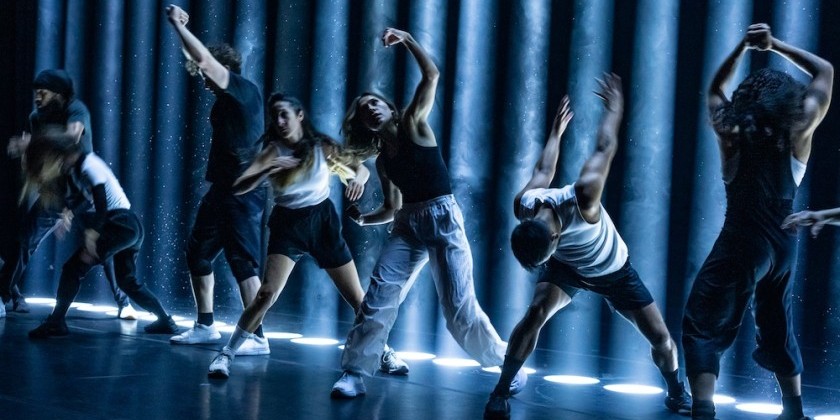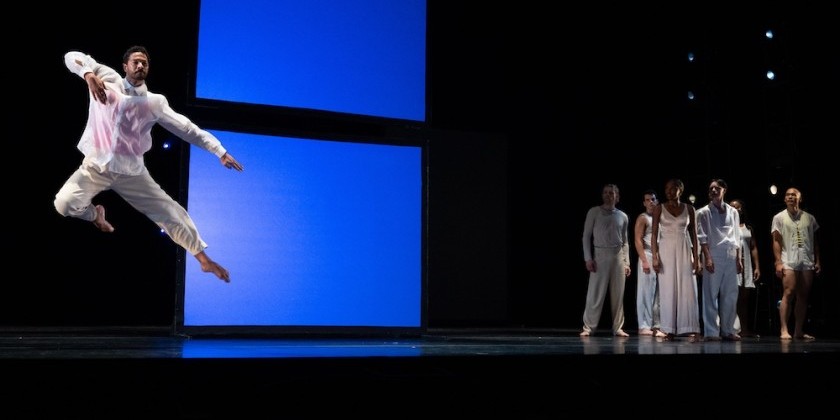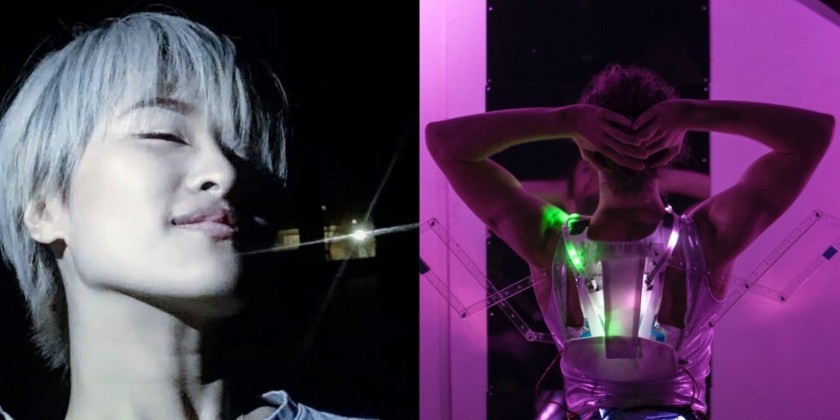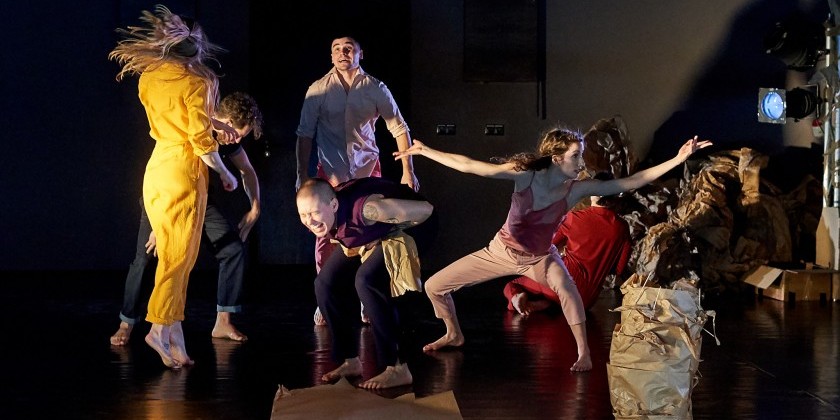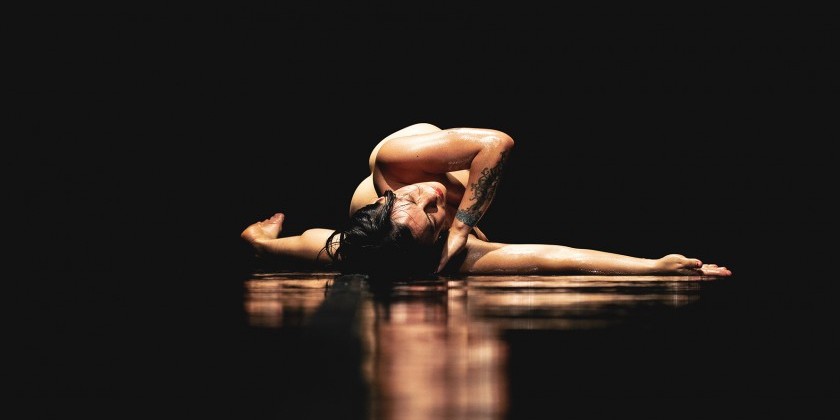Impressions of: The Holy Body Tattoo's "monumental" at BAM
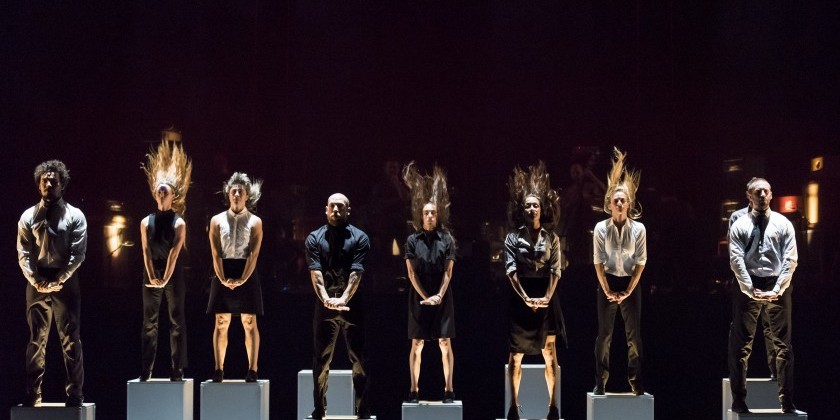
With Post-Rock Group Godspeed You! Black Emperor
Brooklyn Academy of Music
September 17, 2016
Choreography by Dana Gingras and Noam Gagnon / Music by Godspeed You! Black Emperor
Text by Jenny Holzer/ Video by William Morrison /Lighting by Marc Parent
It swells. It roars. It is lush, melancholy, and provocative by turns. It’s also been criticized for dealing in clichés of unending crescendo.
This is the music of the post-rock group Godspeed You! Black Emperor, which accompanies Montreal-based dance company The Holy Body Tattoo as part of BAM Next Wave Festival. The appearance of GY!BE likely accounts for the unusually age-diverse crowd attending a proscenium dance performance, and almost certainly for the handful of people who walk out during the show.

GY!BE is also based in Montreal and was founded in 1994, at the same cultural moment as The Holy Body Tattoo, which was formed in 1993. monumental was choreographed in 2005 but retains a ‘90s ethos of “question everything” paranoia. The friend who accompanied me describes the experience as “a bad dream that Thom Yorke might have.” The music, though, still feels fresh, while the dancing and the questions posed by monumental register as dated.
While the work was billed as an indictment of workplace drudgery and/or the emotional poverty of consumer capitalism, it appears more a meditation on isolation. The dancers rarely touch and when they finally group together, it's only to exclude and yell at one member. Questioning office culture and the impact of drab, grey cubicles on our psyche is important, but the ways we work now are swiftly evolving. Is there room in monumental for a portrayal of the gig economy?

The piece also seems stale because the emotional content of the movement hardly evolves beyond what's revealed within the first few minutes. The dancers start standing on dramatically lit pedestals, twitching and scratching, which eventually grows to full-blown thrashing. But that's about it. At some point, the performers step down for weight sharing and floor work; later there's a section of high-velocity rolls and jumps that push the dancers to their physical limits. This change, so unlike the gestures and screaming that precede it, is welcome. It's a shame a larger vocabulary takes so long to be divulged. At the end, when everything quiets, the dancers use lights to search through dusty darkness — perhaps for survivors. It's the only moment that hints at what these workers might be up against.
Partway through monumental, odd fragments of text by Jenny Holzer project onto the scrim separating the dancers from the musicians. Though they sometimes reference experiences that can be violent or unsettling — having a part of your body touched for the first time, or realizing that people are untrustworthy, for example — the tone is surprisingly prim. Are these directives from the ombudsman in charge of the corporate hell these dancers are trapped in? Further projections of clogged highways and wind turbines hint at two possible futures. But the text and video remain unconnected to what's happening here and now onstage.
The repetitive nature of monumental shouldn't necessarily be its weakness. Repetition can hypnotize an audience and unlock deeper meanings to conventional words and gestures. But the dancing is both visually uninventive and energetically monotone. Instead, it’s the music that offers far more texture than the one-note movement.
The Dance Enthusiast:Sharing Reviews/Impressions and Creating Conversations.
For more Impressions of Dance on The Dance Enthusiast
Share your #Audience Review of this show or others for a chance to win a Foodies delight, Gourmet Olive Oil







